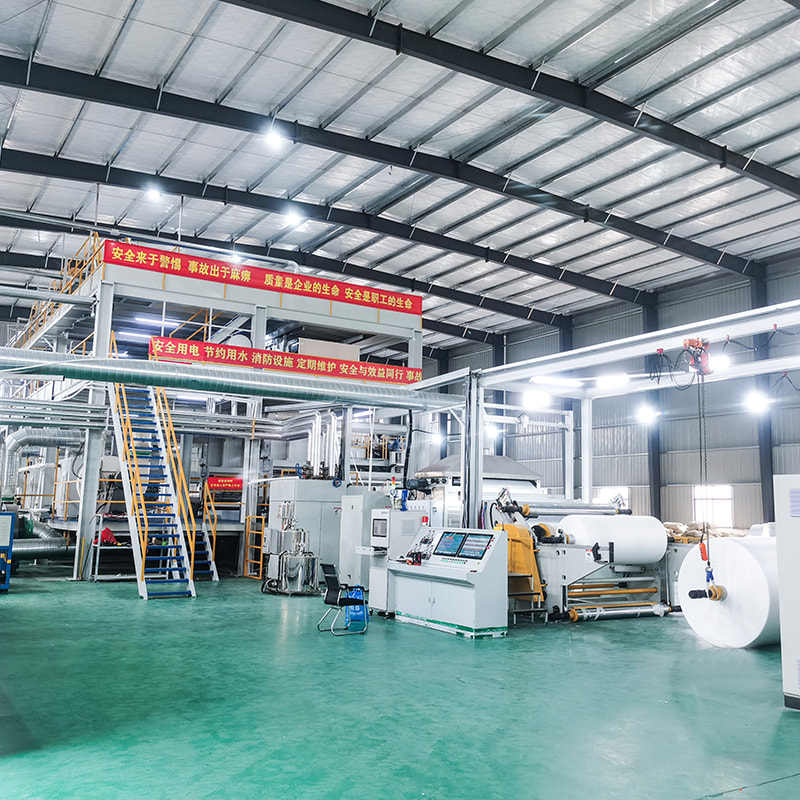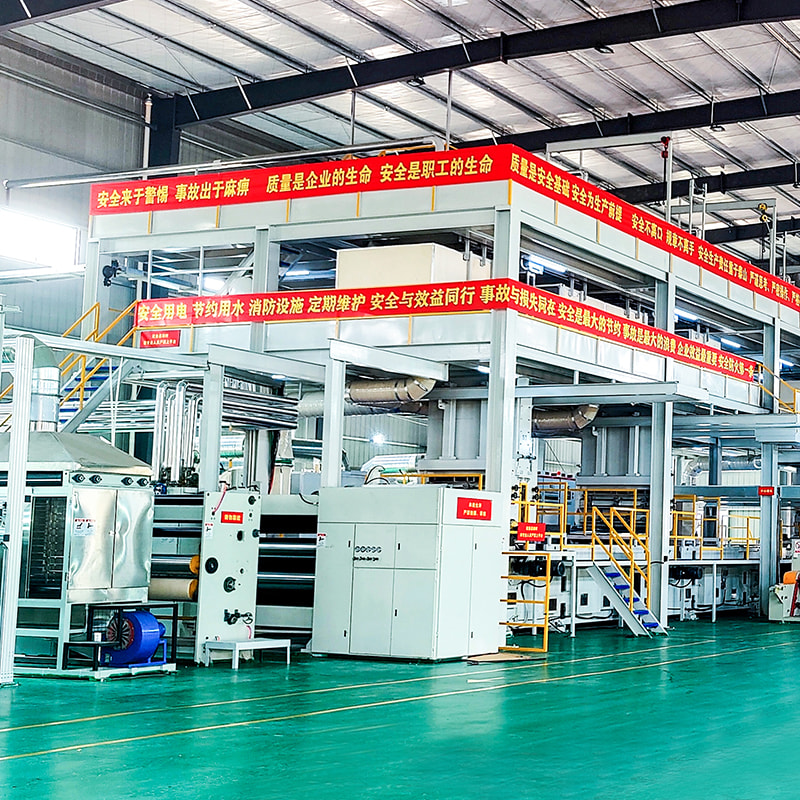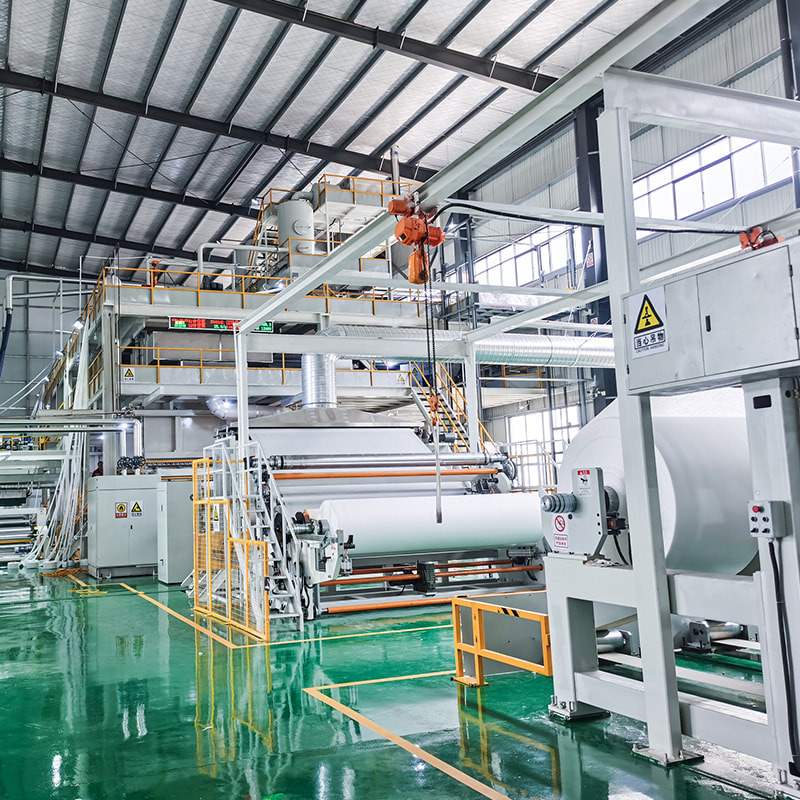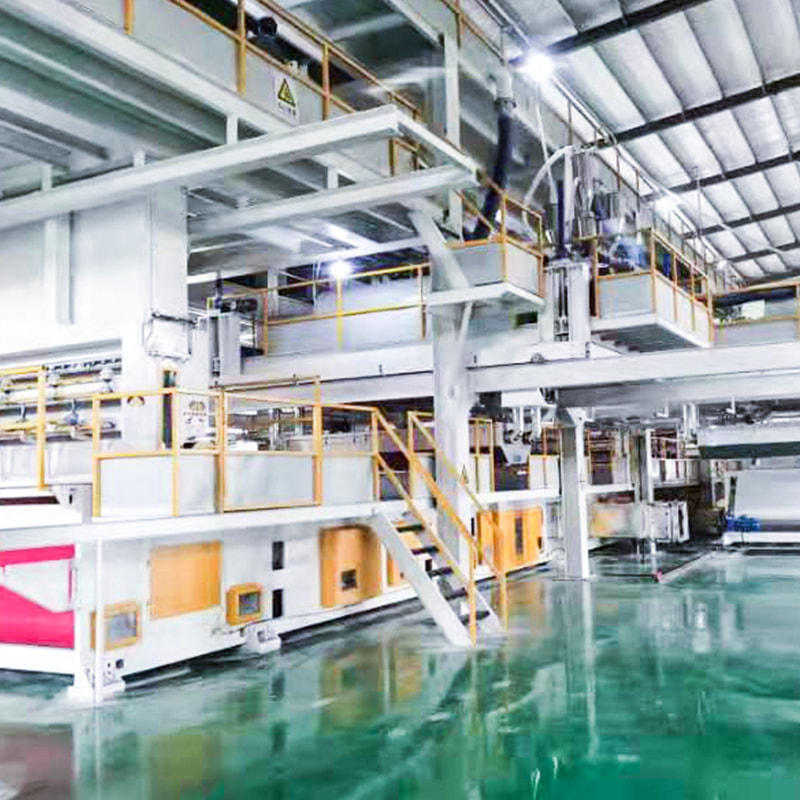Executive summary
Automation has transformed melt-blown (MB) nonwoven production from an operator-intensive, variability-prone process into a stable, data-driven operation. The most cost-effective solutions focus on five levers: (1) labor reduction, (2) higher good-fabric yield, (3) energy optimization, (4) faster, repeatable grade changes, and (5) predictive maintenance. When implemented as an integrated package (controls + mechanics + sensor suite + analytics), these levers typically cut unit cost by 10–20%, improve OEE by 5–15 points, and pay back automation premiums in ~1–2 years under normal market conditions.
Where the money goes in MB production
Total cost per kilogram (simplified):
Unit Cost = Material + Energy + Labor + Maintenance/Consumables + Overhead – By-product value
Material (polypropylene + additives): 60–85% of COGS for commodity MB grades.
Energy (extrusion, air heaters, compressors, HVAC): 5–15%.
Labor (operators + quality techs): 3–10% (varies widely by region and automation level).
Maintenance/consumables (filters, die cleaning, compressor service): 3–8%.
Yield/scrap: Every percentage point of scrap matters because it wastes material and energy.
Automation targets each bucket simultaneously.
What “automation” actually means on an MB line
1) Closed-loop process control
Mass-throughput control: Gravimetric feeders + pressure-controlled melt pumps to stabilize GSM and fiber diameter.
Die & hot-air control: Multi-zone temperature and air-flow balancing with model-predictive control (MPC) to reduce web basis-weight stripes.
Electrostatic charging control: Real-time charge density feedback for filtration grades.
2) In-line quality & vision
Basis-weight scanners (β-gauge/IR): Closed-loop GSM control; statistical mapping for recipe tuning.
Web defects & edge analytics: Cameras and edge AI detect gels, holes, smoke-off, and streaks; triggers auto grade-change interlocks or die-lip purge routines.
3) Smart winding & handling
Auto doffing, splice, and roll ID: Cuts changeover time and operator touches.
Tension & lay-on control: Reduces telescoping and roll waste.
4) Recipe, traceability, and MES/SCADA integration
One-click grade changes with interlocks (polymer MI, temperatures, air rates, charging setpoints).
eBatch records (lot, alarms, parameters, roll genealogy) to support audits and fast root cause analysis.
5) Predictive maintenance
Sensors: Vibration, thermography proxies, motor current signatures, compressor dew point, filter ΔP.
Models: Remaining useful life (RUL) estimates to schedule die cleaning, filter swaps, and compressor service during natural lulls.
Cost-cutting playbook
A) Reduce labor without risking quality
Auto doffing + automated grade-change routines often reduce staffing from 5–7 to 2–4 operators per shift.
Digitized checklists and electronic work instructions maintain consistency with fewer people.
B) Lift yield and stabilize GSM
Closed-loop GSM control commonly halves trim and off-spec from, say, 6% → 3%.
Consistent fiber diameter improves downstream converting yield (masks, filters).
C) Optimize energy
Compressed air & hot-air heaters are big loads. Automation helps via:
Air-flow optimization vs. target GSM (no “set-and-forget” oversupply).
Heat-recovery from exhaust plenums to preheat process air.
Leak detection, pressure banding, and automatic compressor staging.
Expect 5–20% reduction in kWh/kg with disciplined optimization.
D) Shrink changeover losses
Recipe packs + warm-standby zones shorten start-ups.
Auto die-lip purge and on-the-fly air-knife alignment reduce the “learning” waste after a grade change.
E) Maintenance that prevents scrap
Predictive alerts avoid unplanned stoppages that dump rolls or cause smoky webs and gels.
Worked example: automation ROI (illustrative)
Assumptions (example plant):
Throughput: 220 kg/h, 8,000 h/year available.
Sell price: $3.20/kg (blended).
PP + additives: $1.30/kg material cost.
Energy: 1.2 kWh/kg @ $0.10/kWh → $0.12/kg.
Labor: region with $18/h fully loaded.
Maintenance/consumables: $0.18/kg (semi-auto) vs $0.15/kg (auto).
Staffing: 6 ops/shift (semi) → 3 ops/shift (auto).
Scrap: 6% (semi) → 3% (auto).
Capex: baseline semi-auto line $2.0M; automation package + upgrades +$0.6M.
Results:
Unit cost (semi-auto): $2.091/kg.
Unit cost (automated): $1.815/kg.
Annual good output:
Semi-auto: 1,760,000 × (1 − 0.06) = 1,654,400 kg
Automated: 1,760,000 × (1 − 0.03) = 1,707,200 kg
Incremental annual profit from automation: ≈ $529k/year.
Payback on the $0.6M automation increment: ≈ 1.13 years.
Takeaway: even modest gains in labor, yield, and maintenance quickly cover the automation premium.
Practical architecture for a cost-effective automated MB line
Feeding & extrusion
Gravimetric feeders with MI-specific recipes; melt-pump closed loop to maintain constant mass flow.
Melt filter with ΔP sensors; auto-bypass logic to avoid catastrophic pressure spikes.
Die & air system
Multi-zone die heaters; auto ramp rates to protect lips.
VFD-controlled blowers, mass-flow meters, and auto air-knife alignment routines.
Exhaust plenum with heat-recovery coil; humidity and temperature monitoring to stabilize fiber formation.
Web formation & charging
In-line GSM scanner feeding a model-predictive controller (MPC) that trims mass flow and air flow simultaneously.
Corona or tribo charging with setpoint verification via charge density probe.
Winder & roll logistics
Turret winder with automatic splice; core/bobbin auto loader; barcode or RFID taggers for genealogy.
AGV or tugger integration to remove finished rolls, reducing operator touches.
Controls & software
Unified PLC/PAC with OPC UA server; historian for parameters and defects.
Digital twin or “soft sensor” to estimate unmeasured variables (e.g., fiber diameter proxy) for faster tuning.
Key KPIs (and realistic target ranges)
OEE: 70–85% (depending on product mix).
Scrap/off-spec: ≤ 3–4% for stable SKUs; ≤ 6–8% across frequent grade changes.
kWh/kg (line only): 0.9–1.6 depending on die width, air temperature, and recovery.
Grade-change time to saleable web: < 25 min mature lines; < 45 min early ramp.
Die cleaning interval: 2–6 weeks depending on resin cleanliness and filtration.
Procurement checklist: spend where ROI is highest
Must-haves
Gravimetric feeding + melt pump closed loop
GSM scanner with closed-loop control
Turret winder with auto-splice & roll IDs
Centralized recipe management + eBatch records
High-ROI options
Heat-recovery on process air
Predictive maintenance (vibration + ΔP + current signatures)
Compressor staging & leak detection package
“Nice-to-haves,” case-dependent
Vision AI for defect classification (best when selling premium filtration)
AGVs for roll movement (best at scale or with labor constraints)
Implementation roadmap (6 concise steps)
Baseline study (2–4 weeks): Measure current OEE, scrap map, energy/kWh-kg, labor content, changeover time.
Business case: Quantify savings by lever; set target KPIs; pick the automation stack.
Digital infrastructure: Historian, MES connectors, roll genealogy, eBatch.
Mechanical & sensor upgrades: Install scanners, flow meters, temp/pressure, winder automation.
Control strategy: Commission closed-loops; tune MPC; implement alarm philosophy and interlocks.
People & routines: Create digital SOPs, runbooks, and a defect “playbook”; institute daily tier meetings with KPI boards.
Common pitfalls (and how to avoid them)
Over-spec’d airflow = wasted energy & fiber breakage. Use mass-flow control tied to GSM error, not fixed blower frequency.
Data without action. Dashboards don’t save money; closed loops and alarm interlocks do.
Grade-change chaos. Lock recipe packs with interlocks (polymer MI, die temps, air rates, charging) to prevent off-spec ramps.
Ignoring compressed air quality. Poor dew point and oil carryover cause fiber defects; monitor and maintain.
Deferred die maintenance. Predictive alerts are only useful if planning honors them—reserve maintenance windows.
Compliance, safety, and environment
ATEX/NFPA considerations: Heated air + polymer fumes demand proper ventilation, explosion relief where applicable, and interlocked heaters/blowers.
Fume management: Ducting and filtration to meet local limits; monitor VOCs if additives used.
Noise & heat: Enclosures around blowers; heat-recovery improves both ergonomics and energy use.
Waste minimization: Track trim/off-spec by root cause; segregate for potential re-feed where quality standards allow.



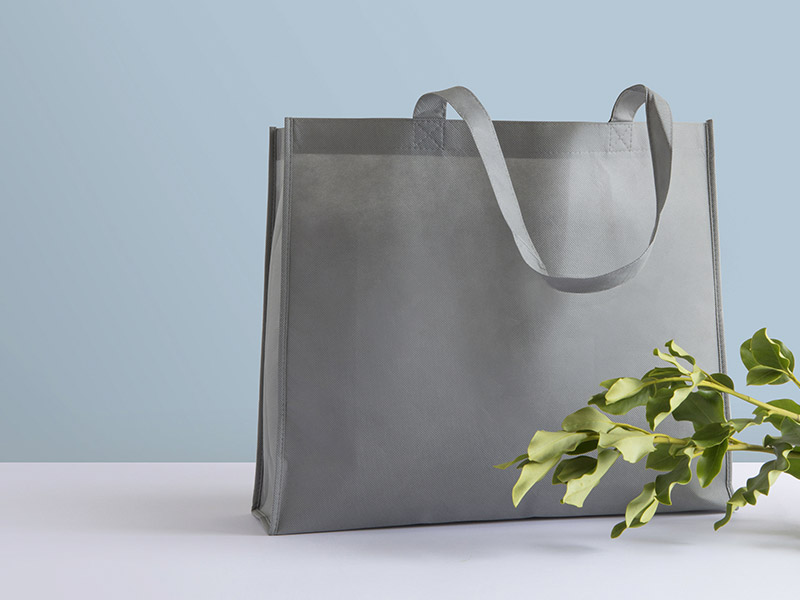
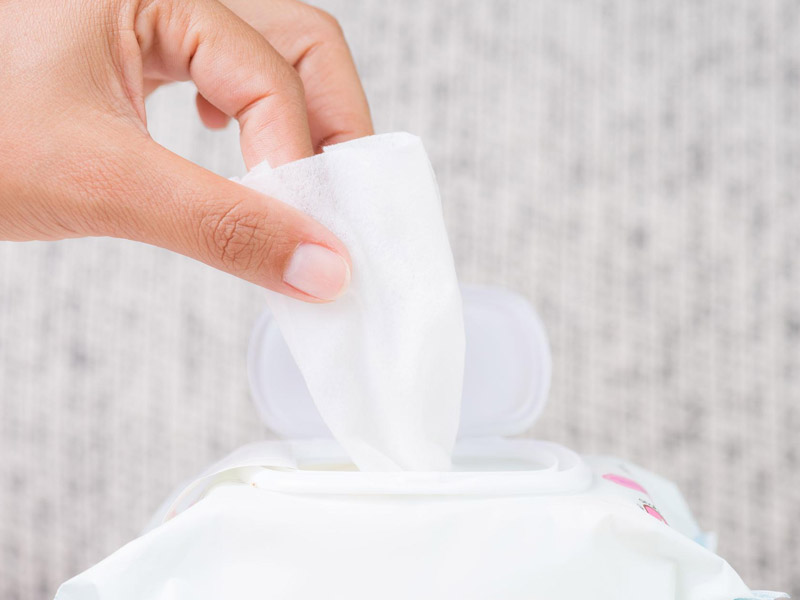
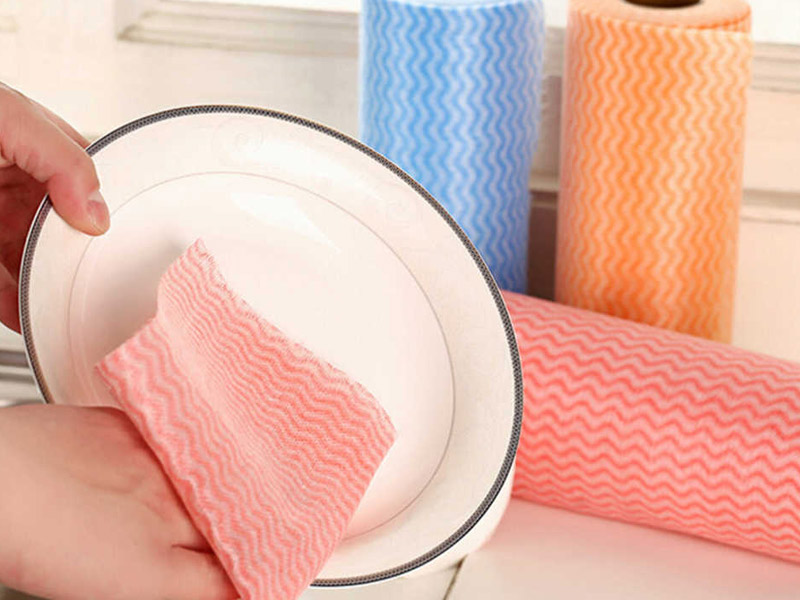
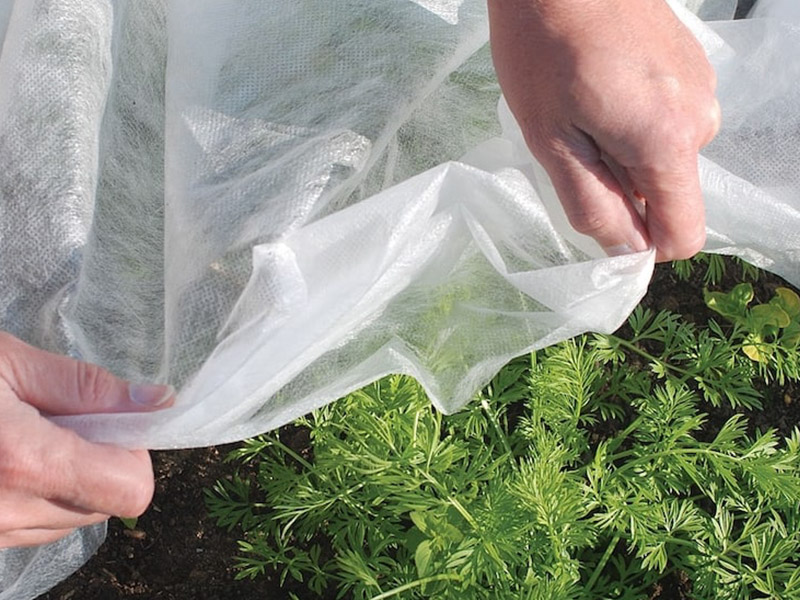
 English
English 中文简体
中文简体 русский
русский عربى
عربى